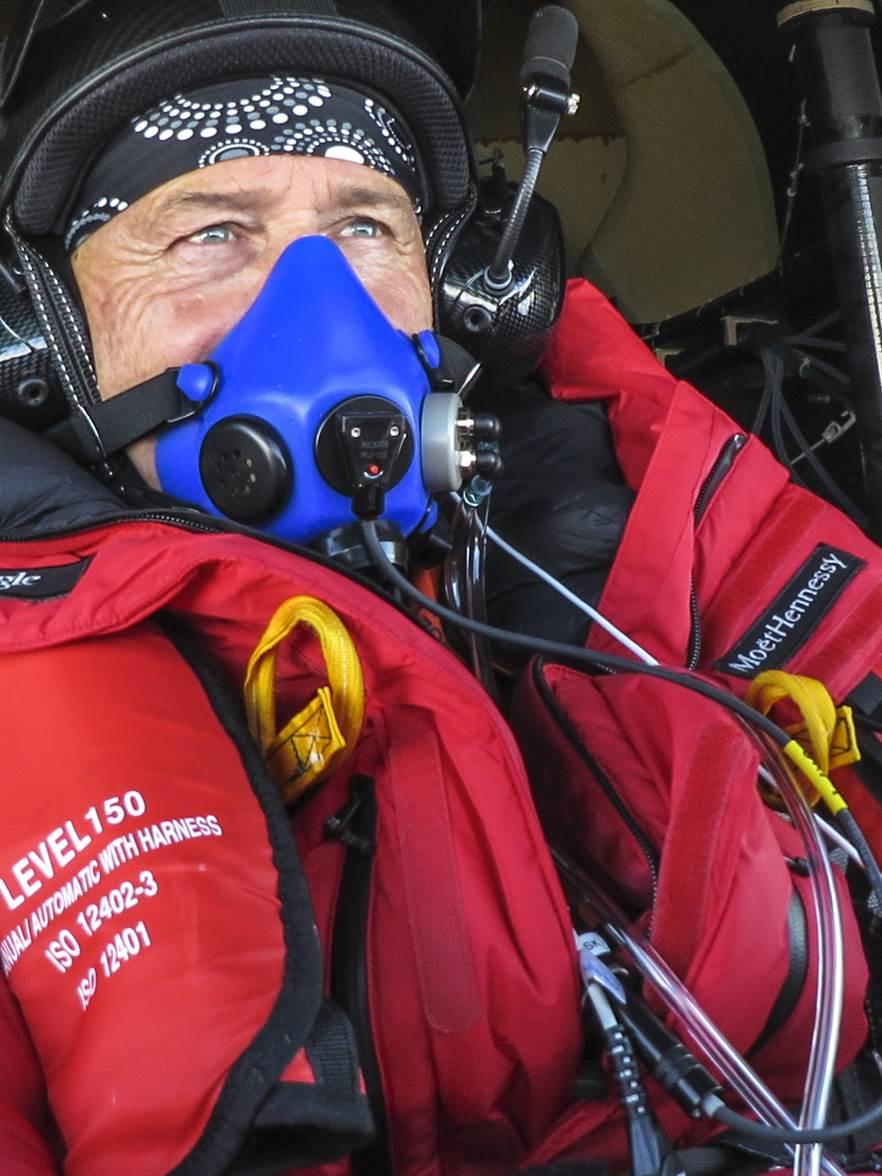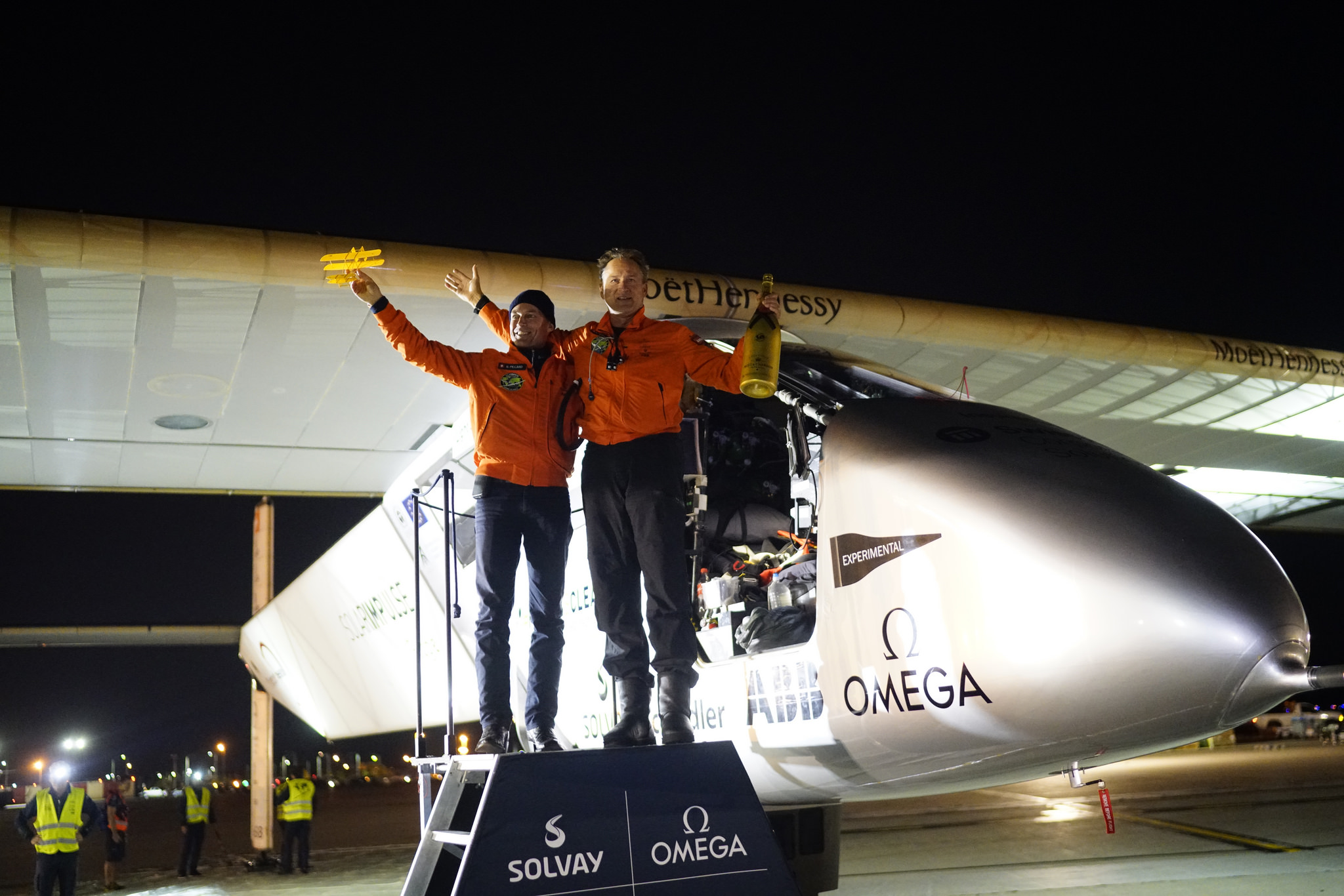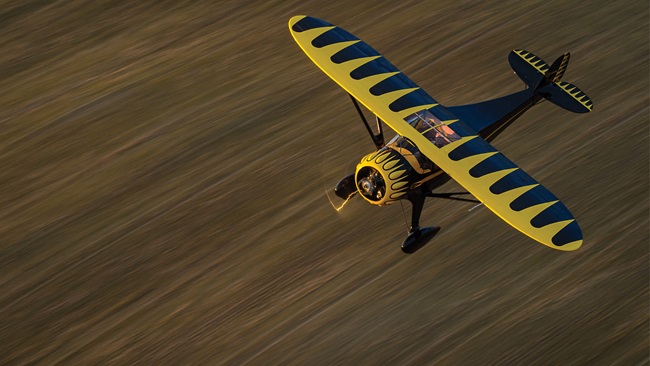Solar Impulse lands in Dayton
The team noted that the Dayton arrival was rich with symbolism, not only its connection to Orville and Wilbur Wright, but also because the flight took place 89 years after Charles Lindbergh’s historic transatlantic crossing, flown on May 20 and 21, 1927, at a somewhat faster pace (Lindbergh noted airspeeds ranging from 92 to 107 mph, while Solar Impulse 2 flies at a little less than half that speed).
Borschberg was greeted by co-founder Bertrand Piccard, and a welcoming committee that also included Stephen and Amanda Wright, the great grandniece and great grandnephew of the fathers of powered flight, a moment captured on video and posted on the team website.
The mission control team in Monaco found the next weather window quickly, and announced May 23 a plan to depart May 24 for Lehigh Valley International Airport in Allentown, Pennsylvania. The team encountered some hangar trouble, however, and delayed taking off until May 25.
An inflatable, portable hangar protects the massive but delicate aircraft, which is powered by more than 17,000 solar cells, generating enough surplus energy to charge a massive battery array and allow the aircraft to fly through the night. A glitch in the hangar's inflation system caused it to partially collapse on the aircraft, though only briefly while the system was restarted. With further inspection of the delicate machine required, Solar Impulse 2 will spend an undetermined amount of time in Pennsylvania before heading to New York, then continuing east. The solar aircraft will follow Lindbergh’s route, more or less, across the Atlantic Ocean, the final major ocean crossing before the team returns to Abu Dhabi, United Arab Emirates, where the journey began on March 9, 2015.

The team has raised $170 million from an array of sponsors to finance the voyage, and has not missed any opportunity to promote solar power and clean energy as a part of aviation's future.
That journey was interrupted for a few months after a Pacific Ocean crossing from Japan to Hawaii set records but also damaged the battery system (5,000 pounds of batteries account for much of the aircraft’s gross weight). The team made repairs and adjustments, and arrived in California April 23, with subsequent stops in Phoenix and Tulsa, Oklahoma, where the most recent leg began. Borschberg and Piccard are flying alternate legs, supported by a large team of weather experts, technicians, and ground handlers who race down the runway on bicycles to assist with takeoffs and landings. The team allows users to follow each flight live, with telemetry and video feeds from the aircraft, and offers online viewers a chance to sign up for email alerts as new flight plans are made.





